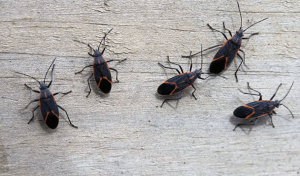Ticks are a common threat to you, your pets, and your family. These insects carry different forms of bacteria that can affect your loved ones’ health.
What is Lyme disease, and what are its symptoms? This post is your guide to understanding ticks and why it’s crucial to keep an eye out for these insects.
The True Extent of Lyme Disease
Let’s look into the full scope of Lyme illness. According to recent news, ticks cause more than 500,000 new infections in the United States each year, and this upward trend will likely continue. Lyme disease is the most common tick-borne infection in the U.S., accounting for over 80% of all tick-related disorders. Babesiosis, tularemia and anaplasmosis are three other tick-borne infections.
Fortunately, there is some good news about ticks carrying Lyme disease! You can take precautions to protect yourself, and if you contract it, you can take an oral antibiotic for two to four weeks, which usually cures most cases of Lyme disease. Yet, some patients may experience lingering symptoms like pain, fatigue, or trouble thinking for over six months after treatment ends.
In more severe situations, you might need a four-week course of intravenous antibiotics. There’s no evidence that Lyme disease sticks around forever after treatment. Just take precautions to avoid ticks and seek medical help if you suspect you might have Lyme disease!
Symptoms of Lyme Disease
You can contract Lyme disease if you’re bit by a tick carrying the bacteria Borrelia burgodorferi.
Most people experience flu-like symptoms and a minor rash in the beginning stages of Lyme disease. However, leaving the condition untreated can result in neurological issues, heart problems, and arthritis pain.
Advice for Staying Away From Ticks
Deer and black-legged ticks are the most common carriers of the bacteria responsible for Lyme disease.
Use the tips below to avoid them:
- Keep out of long grass.
- Wear long-sleeve shirts, high socks, and pants in the wilderness.
- Use insect repellents with 10% to 30% DEET.
- Keep the grass around your home low.
- Monitor your skin for ticks regularly.
- Stick to the center of trails and walkways.
Tips for Tick Removal
If a tick bites you, remove the insect from your body as soon as you can. You can rely on tick removal tools or tweezers to get the job done. The important thing is that you get all parts of the tick out completely — making sure the mouth does not separate from the body:
- Grab a set of clean tweezers.
- Pinch the tick close to the head.
- Pull directly upward with consistent pressure.
- Continue this motion until the tick releases.
- Clean the bite area with soap and water.
- Dispose of the tick by putting it in a plastic bag, covering it with tape, or dropping it down the toilet.
Facts About Lyme Disease
Symptoms of Lyme disease can surface anywhere from a few days to a month after getting bit. As many as 80% of U.S. Lyme disease cases start with a bullseye rash in the affected area.
Roughly 476,000 people contract Lyme disease every year, making it one of the most common illnesses that transfers between insects and humans in America.
How to Prevent Lyme Disease
It is better to avoid ticks entirely, but accidents do happen! If you get a tick bite, you should know that, while there is currently no Lyme disease vaccine in the United States, you can treat it. If you live in a Lyme disease-prone area and a tick has bitten you, a single dose of doxycycline, a powerful antibiotic that fights various infections, including Lyme disease, may help reduce your chances of getting this illness.
Here’s when taking doxycycline is a good idea:
- The tick bite happened in an area known for Lyme disease.
- You removed the tick within 72 hours.
- The tick was swollen with blood.
- It was a black-legged tick (also known as an Ixodes tick).
- Doxycycline is safe for you (consider whether you are allergic, pregnant or nursing).
Remember, taking antibiotics is great for Lyme disease prevention but is not a preventive measure for other tick-related illnesses like anaplasmosis, babesiosis, or Rocky Mountain spotted fever. Instead, watch out for any signs of sickness, like fever or rash, after a tick bite. If you notice any symptoms, talk to a doctor right away.
Protect Your Home From Ticks Today
It’s impossible to know exactly what percentage of ticks carry Lyme disease in Pennsylvania. Still, the number of new Lyme disease cases each year makes it essential to have a plan for protecting your home from ticks. The experienced team at Quest Termite & Pest is here to help.
We’re a pest control company serving Lehigh, Northampton County, and the surrounding areas. We put in the extra effort to provide you with seasonal service in the fight against ticks. Reach out to us today to get a free over-the-phone consultation for tick management solutions!







